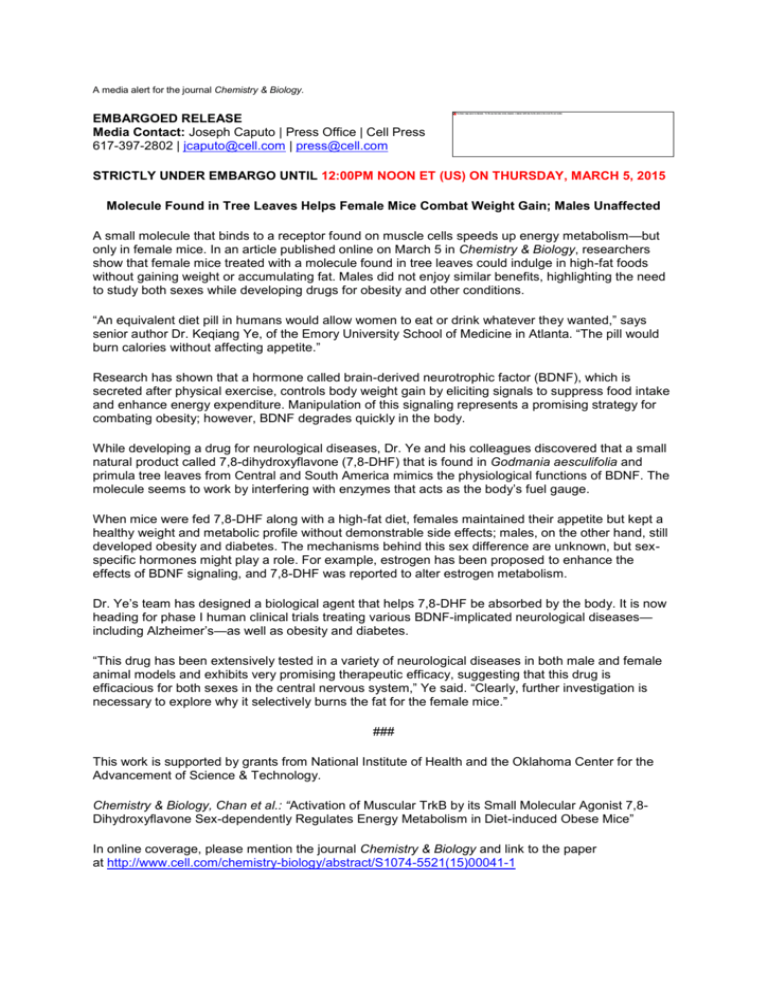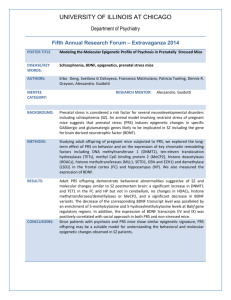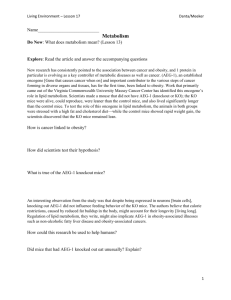Media Release
advertisement

A media alert for the journal Chemistry & Biology. EMBARGOED RELEASE Media Contact: Joseph Caputo | Press Office | Cell Press 617-397-2802 | jcaputo@cell.com | press@cell.com STRICTLY UNDER EMBARGO UNTIL 12:00PM NOON ET (US) ON THURSDAY, MARCH 5, 2015 Molecule Found in Tree Leaves Helps Female Mice Combat Weight Gain; Males Unaffected A small molecule that binds to a receptor found on muscle cells speeds up energy metabolism—but only in female mice. In an article published online on March 5 in Chemistry & Biology, researchers show that female mice treated with a molecule found in tree leaves could indulge in high-fat foods without gaining weight or accumulating fat. Males did not enjoy similar benefits, highlighting the need to study both sexes while developing drugs for obesity and other conditions. “An equivalent diet pill in humans would allow women to eat or drink whatever they wanted,” says senior author Dr. Keqiang Ye, of the Emory University School of Medicine in Atlanta. “The pill would burn calories without affecting appetite.” Research has shown that a hormone called brain-derived neurotrophic factor (BDNF), which is secreted after physical exercise, controls body weight gain by eliciting signals to suppress food intake and enhance energy expenditure. Manipulation of this signaling represents a promising strategy for combating obesity; however, BDNF degrades quickly in the body. While developing a drug for neurological diseases, Dr. Ye and his colleagues discovered that a small natural product called 7,8-dihydroxyflavone (7,8-DHF) that is found in Godmania aesculifolia and primula tree leaves from Central and South America mimics the physiological functions of BDNF. The molecule seems to work by interfering with enzymes that acts as the body’s fuel gauge. When mice were fed 7,8-DHF along with a high-fat diet, females maintained their appetite but kept a healthy weight and metabolic profile without demonstrable side effects; males, on the other hand, still developed obesity and diabetes. The mechanisms behind this sex difference are unknown, but sexspecific hormones might play a role. For example, estrogen has been proposed to enhance the effects of BDNF signaling, and 7,8-DHF was reported to alter estrogen metabolism. Dr. Ye’s team has designed a biological agent that helps 7,8-DHF be absorbed by the body. It is now heading for phase I human clinical trials treating various BDNF-implicated neurological diseases— including Alzheimer’s—as well as obesity and diabetes. “This drug has been extensively tested in a variety of neurological diseases in both male and female animal models and exhibits very promising therapeutic efficacy, suggesting that this drug is efficacious for both sexes in the central nervous system,” Ye said. “Clearly, further investigation is necessary to explore why it selectively burns the fat for the female mice.” ### This work is supported by grants from National Institute of Health and the Oklahoma Center for the Advancement of Science & Technology. Chemistry & Biology, Chan et al.: “Activation of Muscular TrkB by its Small Molecular Agonist 7,8Dihydroxyflavone Sex-dependently Regulates Energy Metabolism in Diet-induced Obese Mice” In online coverage, please mention the journal Chemistry & Biology and link to the paper at http://www.cell.com/chemistry-biology/abstract/S1074-5521(15)00041-1 To access the paper proof PDF, please visit this dropbox: https://www.dropbox.com/sh/m2devgsbpiyo8j2/AADUgeV1Lr2pIYfyCR_N2zWpa?dl=0 or email Joseph Caputo at jcaputo@cell.com. Author Contact: Keqiang Ye Professor, Pathology & Laboratory Medicine Emory University School of Medicine kye@emory.edu 404-712-2814 Media Contact: Quinn Eastman Emory University School of Medicine qeastma@emory.edu 404-727-7829






![Historical_politcal_background_(intro)[1]](http://s2.studylib.net/store/data/005222460_1-479b8dcb7799e13bea2e28f4fa4bf82a-300x300.png)




